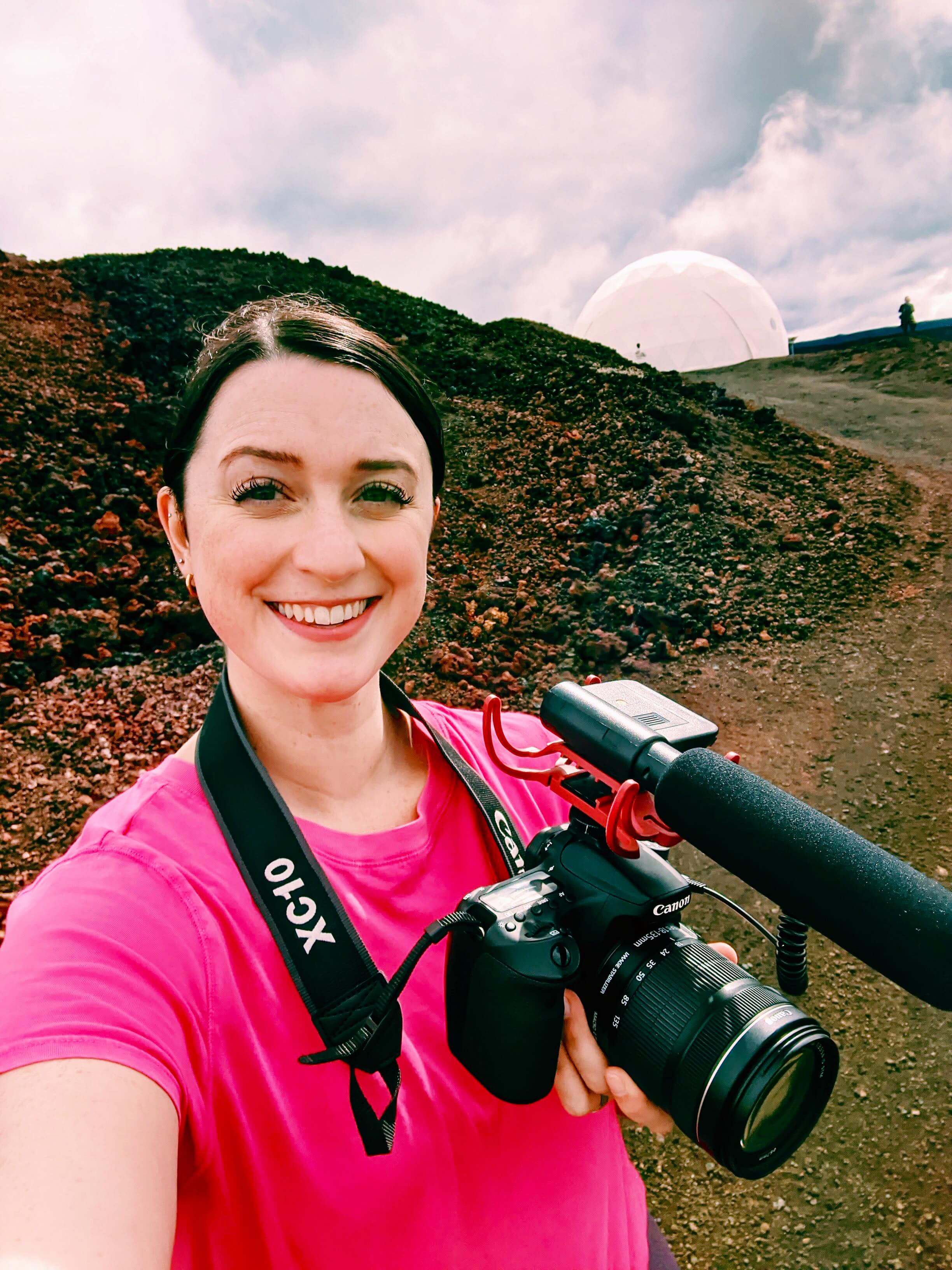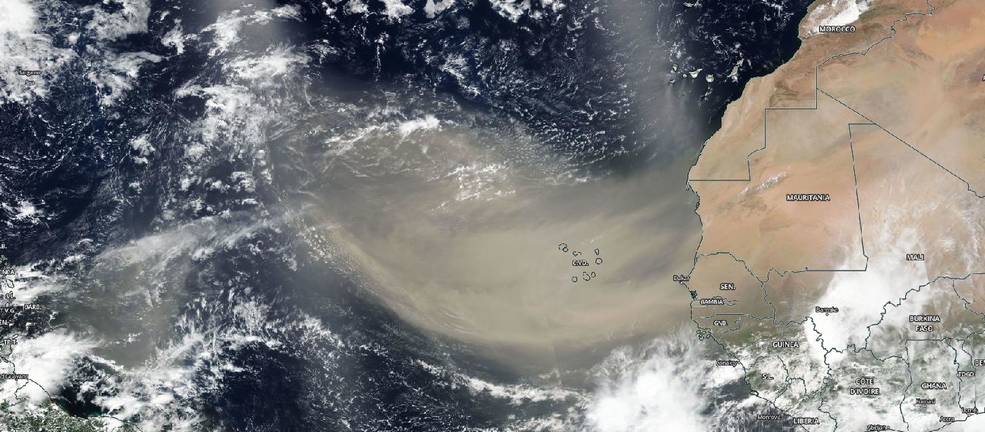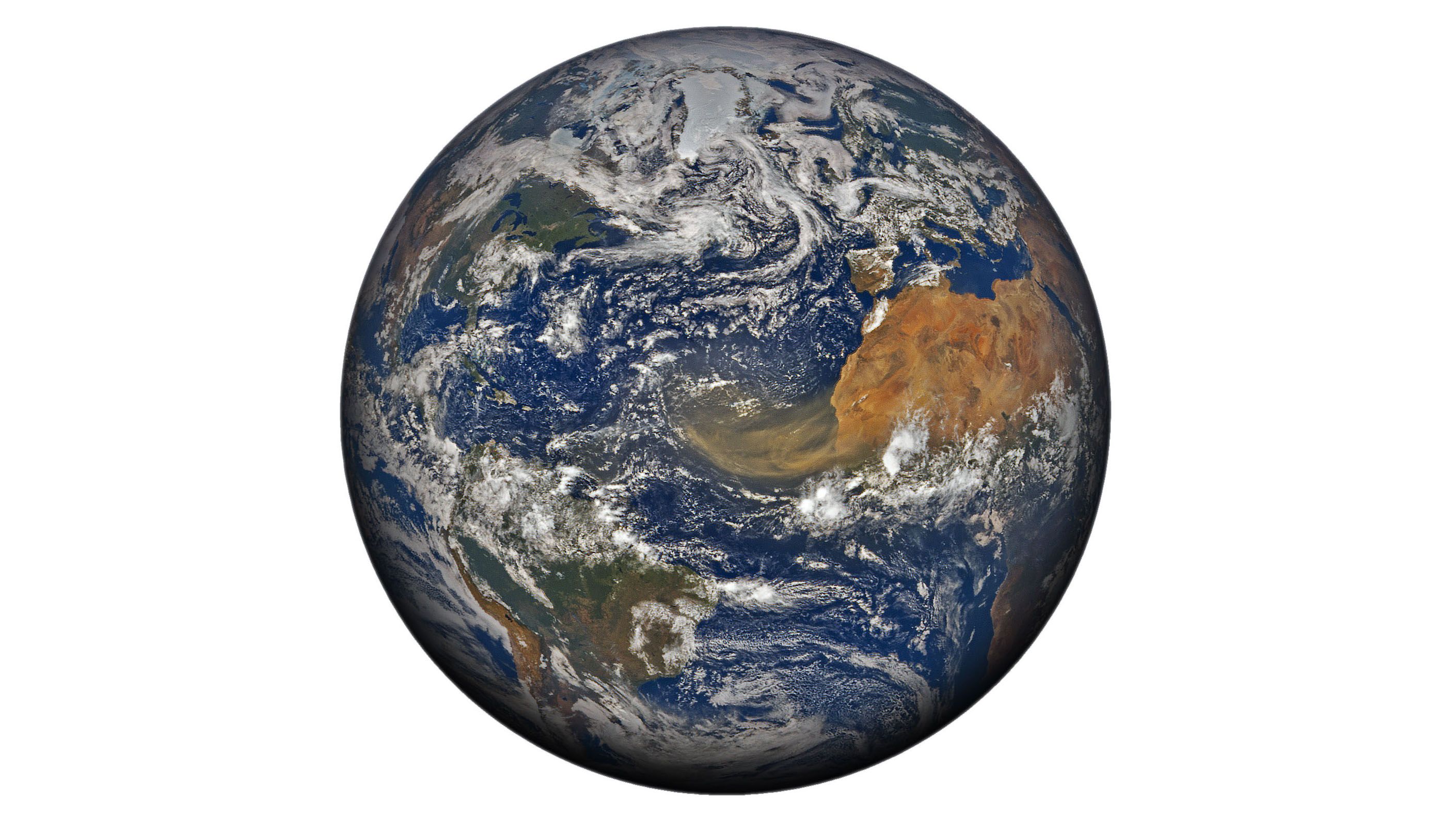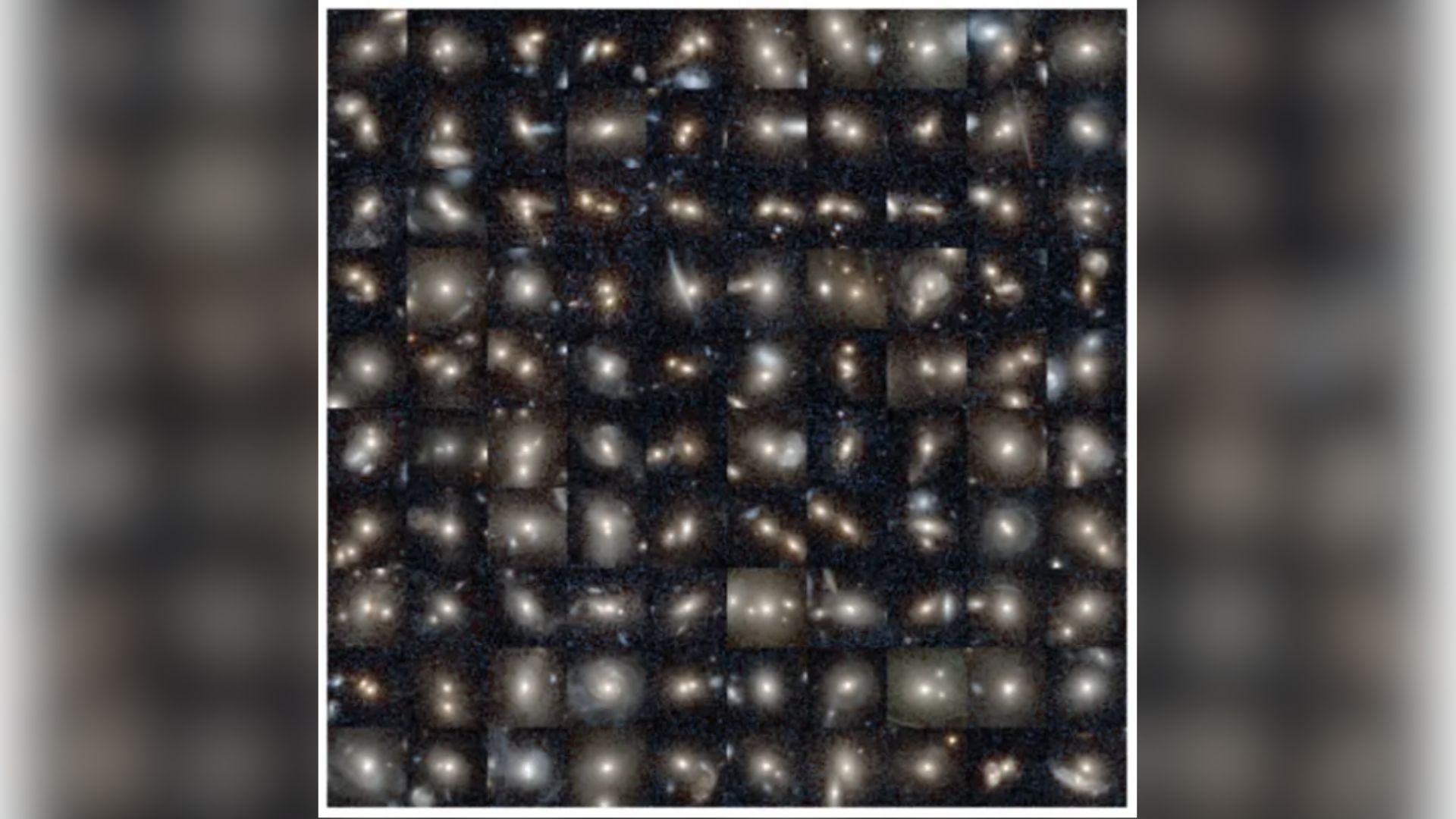Massive Saharan dust plume swirling across Atlantic Ocean spotted from space
NASA satellites have spotted an enormous brown plume of dust from the Sahara desert reaching out across the Atlantic Ocean.
The vast dust cloud, spotted on June 18 was spotted by NOAA's Deep Space Climate Observatory and the NASA-NOAA satellite Suomi NPP. Views from Suomi NPP, which NASA shared here, show the dust plume spreading out over 2,000 mile of the North Atlantic Ocean.
A global view of the dust storm from DSCOVR's Earth Polychromatic Imaging Camera (EPIC) shows the sheer scale of the plume in relation to the continents which border the Atlantic, according to NASA's Earth Observatory site.
Related: The most powerful storms of the solar system in photos
Also on June 18, NASA's Terra satellite was able to get a detailed look at the dust over the Cape Verde islands off Africa's west coast using the Moderate Resolution Imaging Spectroradiometer (MODIS) instrument.
This moving plume was no surprise as earlier in the week, on June 16, NOAA's GOES-East satellite captured stunning imagery of the plume traveling from the Sahara Desert west across the Atlantic.
The traveling dust was also expected because, according to NOAA's Hurricane Research Division, every three to five days from late spring through early fall, such a dust cloud, known as the Saharan Air Layer (SAL), forms over the Sahara Desert and starts moving westward across the Atlantic. The SAL stretches anywhere from 5,000 to 20,000 feet (1.5 to 6 kilometers) into the atmosphere.
Breaking space news, the latest updates on rocket launches, skywatching events and more!
On June 16, 2020, @NOAA's #GOESEast 🛰️ captured this imagery of an expansive #DustPlume from the #Sahara Desert traveling west across the Atlantic. It's expected to reach the #Caribbean later this week, and may even reach parts of the U.S. next week.More: https://t.co/W7FP26Pkn1 pic.twitter.com/Eq5ZVrlrnYJune 18, 2020
Every year, about 800 million tons of dust is picked up by the wind from deserts in North Africa and blown across the Atlantic Ocean, traveling to the Amazon River Basin in South America, beaches in the Caribbean and, in part, into the air in North and South America.
While the dust has a different effect in the different places where it lands, in the Amazon, the minerals in the dust replace critical nutrients in rainforest soils that are continuously carried away by tropical rains.
- Hurricane Florence in photos: See the massive storm from space
- Hurricane Irma photos: Images of a monster storm
- Amazing hurricane photos from space Empty list
Email Chelsea Gohd at cgohd@space.com or follow her on Twitter @chelsea_gohd. Follow us on Twitter @Spacedotcom and on Facebook.
OFFER: Save 45% on 'All About Space' 'How it Works' and 'All About History'!
For a limited time, you can take out a digital subscription to any of our best-selling science magazines for just $2.38 per month, or 45% off the standard price for the first three months.

Chelsea “Foxanne” Gohd joined Space.com in 2018 and is now a Senior Writer, writing about everything from climate change to planetary science and human spaceflight in both articles and on-camera in videos. With a degree in Public Health and biological sciences, Chelsea has written and worked for institutions including the American Museum of Natural History, Scientific American, Discover Magazine Blog, Astronomy Magazine and Live Science. When not writing, editing or filming something space-y, Chelsea "Foxanne" Gohd is writing music and performing as Foxanne, even launching a song to space in 2021 with Inspiration4. You can follow her on Twitter @chelsea_gohd and @foxannemusic.



